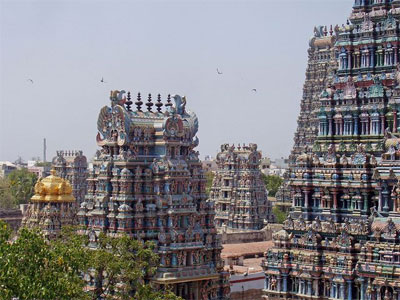Chennai Travel Guide:

Chennai
Chennai is the capital city of the Indian state of Tamil Nadu, located on the Coromandel Coast of the Bay of Bengal. Chennai being the fourth most populous metropolitan area and the fifth most populous city in India, it is also the world's 36th largest metropolitan area.Chennai had a population of 4.34 million in the 2001 census within the area administered by the Corporation of Chennai and an extended Metropolitan Population of 6.5 million.The urban agglomeration of metropolitan Chennai has an estimated population over 8.2 million people.
Chennai's economy has a broad industrial base in the automobile, computer, technology, hardware manufacturing, and healthcare industries. The city is India's second largest exporter of software, information technology (IT) and information-technology-enabled services (ITES). A major chunk of India's automobile manufacturing industry is based in and around the city. Chennai Zone contributes 39 per cent of the State's GDP. Chennai accounts for 60 per cent of the country's automotive exports, which leads it to be called as 'The Detroit of Asia'.
Chennai is an important centre for Carnatic Music and hosts a large cultural event, the annual Madras Music Season, which includes performances by hundreds of artists. The city has a vibrant theatre scene and is an important centre for the Bharatanatyam, a classical dance form. The Tamil film industry, one of the largest film industries in India, also popularly known as Kollywood is based in the city; the soundtracks of the films dominate its music scene.
History
The region around Chennai has served as an important administrative, military, and economic centre since the 1st century. Stone age implements were found in a pit near Pallavaram in Chennai. According to the archeological survey of India, Pallavaram was a megalithic cultural establishment.
The area was ruled by various South Indian dynasties, notably the Pallava, the Chera Dynasty, the Chola, the Pandya, and Vijaynagar. The town of Mylapore, now part of Chennai, was once a major Pallavan port. The Portuguese arrived in 1522 and built a port called São Tomé after the Christian apostle, St Thomas, who is believed to have preached in the area between 52 and 70 AD. In 1612, the Dutch established themselves near Pulicat, just north of the city.
On 22 August 1639, Francis Day of the British East India Company bought a small strip of land on the Coromandel Coast. The region was ruled by Damarla Venkatadri Nayakudu,, the Nayaka of Vandavasi. He granted the British permission to build a factory and warehouse for their trading enterprises. A year later, the British built Fort St George, which became the nucleus of the growing colonial city. Fort St. George housed the Tamil Nadu Assembly until the new Secretariat building was opened in 2010. In 1746, Fort St. George and Madras were captured by the French under General La Bourdonnais, the Governor of Mauritius, who plundered the town and its outlying villages. The British regained control in 1749 through the Treaty of Aix-la-Chapelle and fortified the town's fortress wall to withstand further attacks from the French and another looming threat, Hyder Ali, the Sultan of Mysore. By the late 18th century, the British had conquered most of the region around Tamil Nadu and the northern modern-day states of Andhra Pradesh and Karnataka, establishing the Madras Presidency with Madras as the capital. Under British rule, the city grew into a major urban centre and naval base.